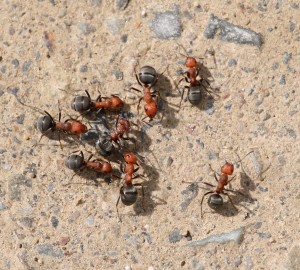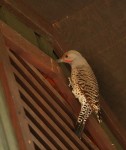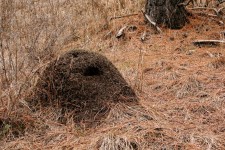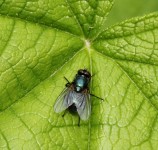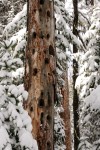Willingly bringing natural items into my home, such as Christmas trees, plants and pinecones, is fine but when the outdoors comes inside uninvited there is a problem. There are the semi-tolerable stink bugs, houseflies and spiders, but there is nothing pleasant about an ant invasion–especially over the holidays. The ants in my house were marching in more than one by one; it is more like hundreds by hundreds. Unfortunately, I found out I was not the only one with ant problems this winter.
Ants invade houses not because they are dirty, but because the house offers shelter, nesting space and maybe a food source. Ants can nest in a variety of habitats. When outside it may be in soil or decaying wood and when inside a house it can be behind moldings, baseboards and countertops. A house may also be close to a food source outside or offer a food source inside, depending on the species of ant.
People don’t willingly allow ants into their homes, but instead unknowingly invite them in. Do you have any shrubbery or tree limbs touching your house along the base or roof? These are like a highway between your house and their food source. One food source is honeydew secreted by aphids or certain caterpillars when they feed on plant sap. The shorter the distance between the ant’s nest and the food source, the more likely the ants will keep nesting there.
A well-sealed home is one way to prevent invasion. Any cracks should be caulked around the base of the house and firewood stored away from walls. Ants also love moisture as demonstrated by the ants swarming my faucet. To deter ants, make sure gutters are clean, downspouts drain away from the house and that bathroom and kitchens are well caulked.
Normally ants survive the winter by entering a state of dormancy or inactivity because their natural food source is unavailable. However, if food is available in a house, then why would an ant want to be inactive?
Only one ant has to find the food or water source in a house to bring in the rest of the colony. Certain ants in a colony are designated foragers, usually wingless females. Once a foraging ant finds food, it will leave a scent trail from the food source back to the nest. Then other foragers will follow the trail and lay down their scent also, which reinforces the trail. The number of ants following the trail can quickly multiply depending on the size of the colony (which can range from 10 ants to 10,000 ants).
These trails can be temporarily disrupted with a mild vinegar and water solution but it will not keep them at bay for long—as I found out. The best way to eliminate an ant colony is with slow-killing bait. Some baits kill the foraging ants before they return to the nest. The slow-killing baits are ideal because they allow the ants to return to their nest and feed the other ants, including the queen. Since foraging ants are the only ones obtaining the food, they also feed the remainder of the colony, including the larvae. They do this by regurgitating the liquid they have obtained (a process known as trophallaxis) and feeding it to other ants. Therefore, when they regurgitate the slow-killing bait they are spreading it throughout the colony.
A colony can only be eliminated if the queen is killed since the queen is the sole reproducer of the nest. Queen ants can live up to 28 years while worker ants only live one to three years. Some colonies even have multiple queens, which makes controlling the ant invasion harder since the colony multiplies faster.
The key to controlling an ant invasion is to act quickly once ants are noticed—the longer you wait to handle the problem, the longer it will take to eliminate the problem. So when the ants go marching into your home: take notice and take action.

